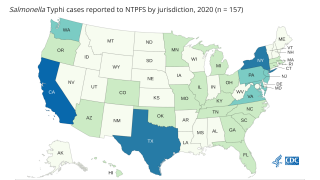Typhus Outbreak in California Expands in LA and Long Beach

The Los Angeles County Department of Public Health is investigating an outbreak of flea-borne typhus in various cities in California.
One of the typhus hotspots is Pasadena, a city within Los Angeles County.
According to the Pasadena Public Health Department, there have been at least 20 residents who have contracted typhus during 2018.
“Typhus fever is a disease that can cause serious complications requiring lengthy hospitalization, but rarely, death,” said Dr. Ying-Ying Goh, Pasadena Health Officer.
“All residents should take steps to prevent fleas in and around the home.”
Additionally, the city of Long Beach, California, has reported 12 typhus cases. Which is double the normal annual number, said the city's infectious disease response coordinator, to NBC News.
The Los Angeles County Department of Public Health spokeswoman said to NBC News via email that officials are investigating the source of the typhus in downtown L.A. by searching specifically for "high concentrations of infected fleas and/or infected rats, feral cats and opossums."
Flea-borne typhus is a disease that infected fleas can spread to humans. Bacteria called Rickettsia typhi found in infected fleas, and their feces, cause typhus.
Fleas can come from many types of animals including cats, rats, and opossums. Although pets and animals do not get sick from typhus, typhus can cause high fever, chills, headache, and rash in people.
Epidemic typhus, also called louse-borne typhus, is an uncommon disease caused by a bacteria called Rickettsia prowazekii. Epidemic typhus is spread to people through contact with infected body lice, says the Centers for Disease Control and Prevention (CDC).
Though epidemic typhus was responsible for millions of deaths in previous centuries, it is now considered a rare disease. Occasionally, cases continue to occur, in areas where extreme overcrowding is common and body lice can travel from one person to another.
Neither the World Health Organization (WHO) or CDC recommends a preventive vaccine against typhus.
In the USA, there is often confusion between typhus and typhoid.
Typhoid is a foodborne illness that is often transmitted through contaminated food or water, and symptoms develop within 3 weeks. Symptoms are usually mild but can be serious.
More than 200,000 people die around the world from typhoid every year, says the WHO.
Both the WHO and CDC have approved a preventive vaccine for typhoid.
Two typhoid vaccines are available in the United States:
- Vi capsular polysaccharide vaccine (ViCPS) (Typhim Vi, manufactured by Sanofi Pasteur) for intramuscular use
- Oral live attenuated vaccine (Vivotif, manufactured from the Ty21a strain of serotype Typhi by PaxVax)
Both typhoid vaccines only protect 50–80 percent of recipients. And, these typhoid vaccines do not offer protection against paratyphoid fever.
International travelers to typhoid risk areas can easily request a vaccination appointment with a pharmacy at Vax-Before-Travel.
The CDC Vaccine Price List provides the private sector vaccine prices for general information, and vaccine discounts can be found here.
Vaccines, like any medicine, can have side effects, says the CDC. You are encouraged to report negative side effects of vaccines to the FDA or CDC.
Our Trust Standards: Medical Advisory Committee

























